Family : Sciaenidae

Text © Giuseppe Mazza

English translation by Mario Beltramini
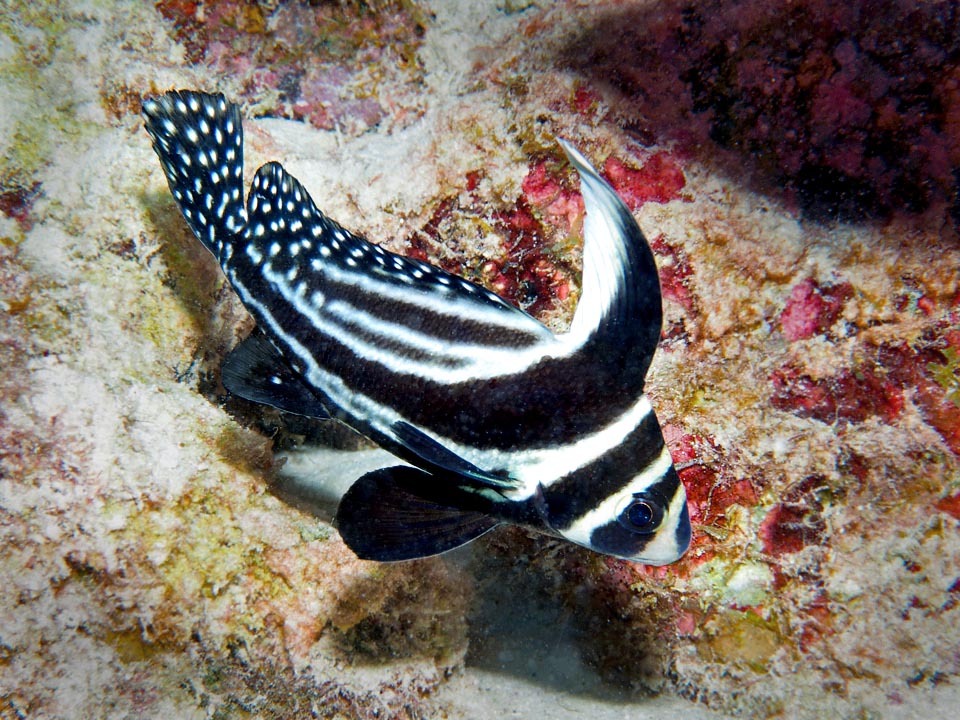
Known as Spotted drum, Spotted ribbonfish, Parish priest or Lord Abbot, Eques punctatus lives in the Caribbean up to north Brazil © Pauline Walsh Jacobson
Eques punctatus Bloch & Schneider, 1801, known also as Equetus punctatus, belongs to the class of the Actinopterygii, the ray-finned fishes, to the order Perciformes and to the family Sciaenidae.
The genus Eques however originates from the Latin “eques”, horse, whilst the specific term punctatus refers, always in Latin, to the showy white speckling of the adults.
The juveniles look like ribbons, hence the vulgar name of Spotted ribbonfish that adds to that of Spotted knight due to the first dorsal fin that evokes a horseman with plume.
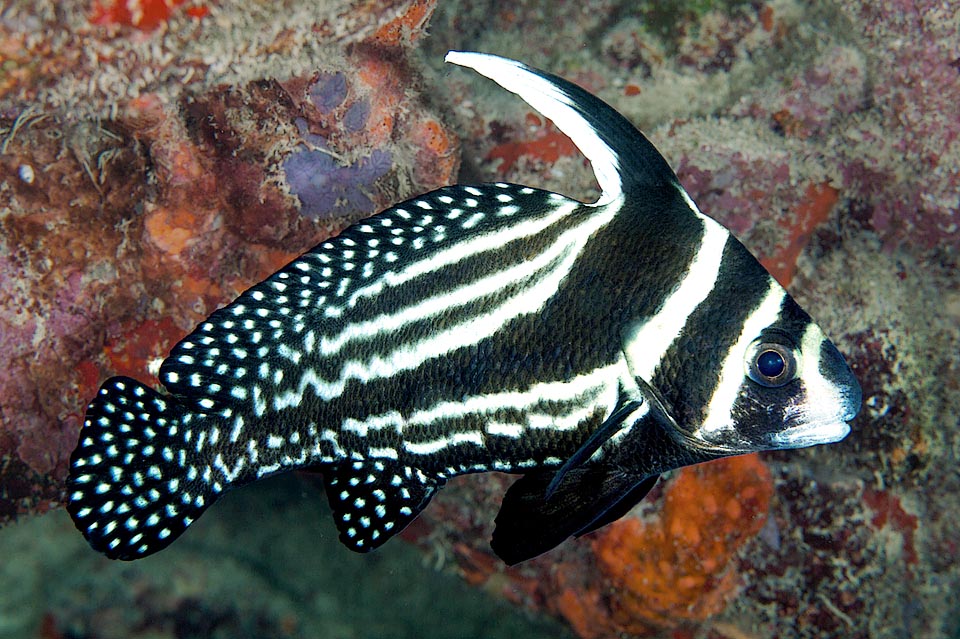
It’s a black and white fish, with the first dorsal fin elongated and a showy white speckling on the dorsal, the caudal and the anal © Allison & Carlos Estape
Zoogeography
Eques punctatus is basically a Caribbean fish. As a matter of fact, we find it from the Bermudas, Florida and Mexico up to Antilles and to the coasts of Venezuela and northern Brazil.
Ecology-Habitat
Like Sciaena umbra of Mediterranean, less showy but with similar profile, lives in shallow waters, usually from 4 to 30 m of depth, in grottoes or ovehanging crevices among the corals.
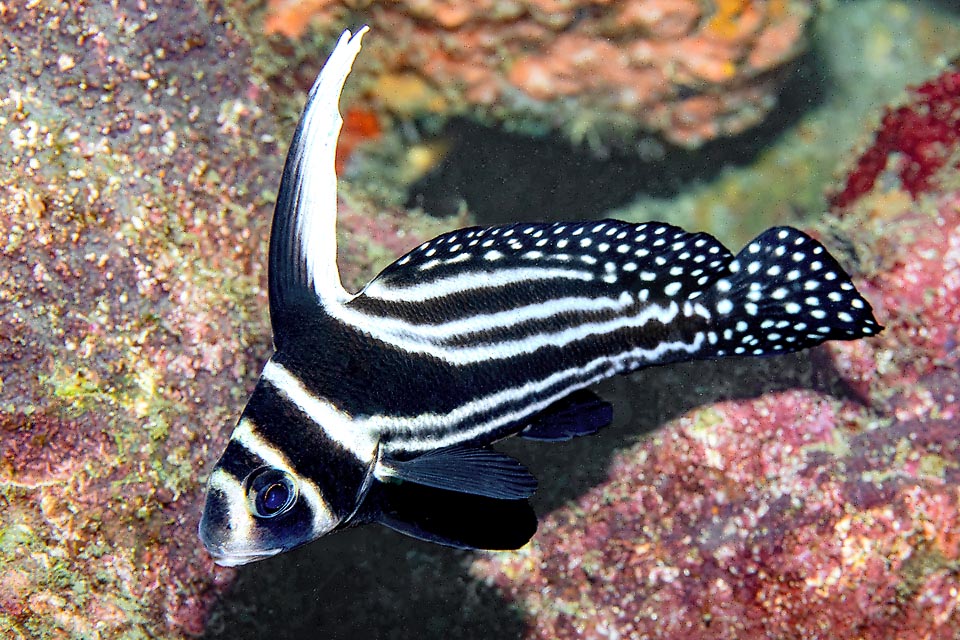
Hidden during the day in the crevices of the reefs, goes out at night to hunt small crustaceans and worms. Eggs and larvae are pelagic © Allison & Carlos Estape
Morphophysiology
It can reach 27 cm, though its normal length is of about 18 cm, and evokes also, due to its profile, Umbrina cirrosa but does not have the barbel.
The back is very curved compared to the flat belly. The almost horizontal mouth under the roundish snout, has on both jaws rows of villiform teeth whilst the vomer and the palatine are toothless. The otolith placed in the skull, called sagitta, a small calcified structure that allows the fishes to control speed and orientation, is roundish and thick.
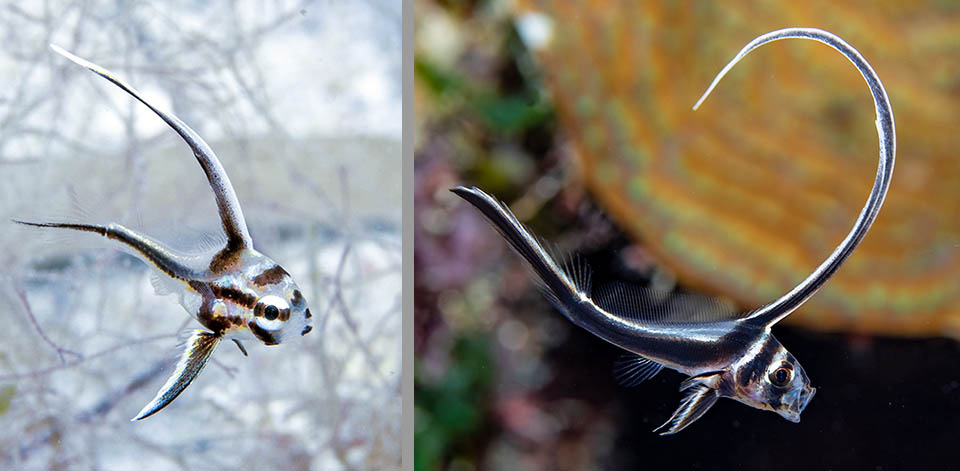
These are the first juvenile phases, with the body assuming, while growing, a nastriform look © Allison & Carlos Estape
There are 15-18 branchial rakers. The operculum is forked above, whilst the preoperculum is practically smooth. The eye is relatively large and regarding the shape the fish resembles a lot, apart the livery, the Caribbean Eques lanceolatus.
There are two dorsal fins. The first, elongated, has 11-13 spiny rays; the second, 1 spiny ray and 45-47 soft. The anal has 2 spiny rays and 6-8 unarmed; the pectoral ones are much smaller than the pelvic and in adults the caudal is slightly rounded.
It can make the swim bladder vibrate, shaped like a carrot and without ramifications as is instead the case for other Sciaenidae, producing a dull sound similar to a drumbeat.
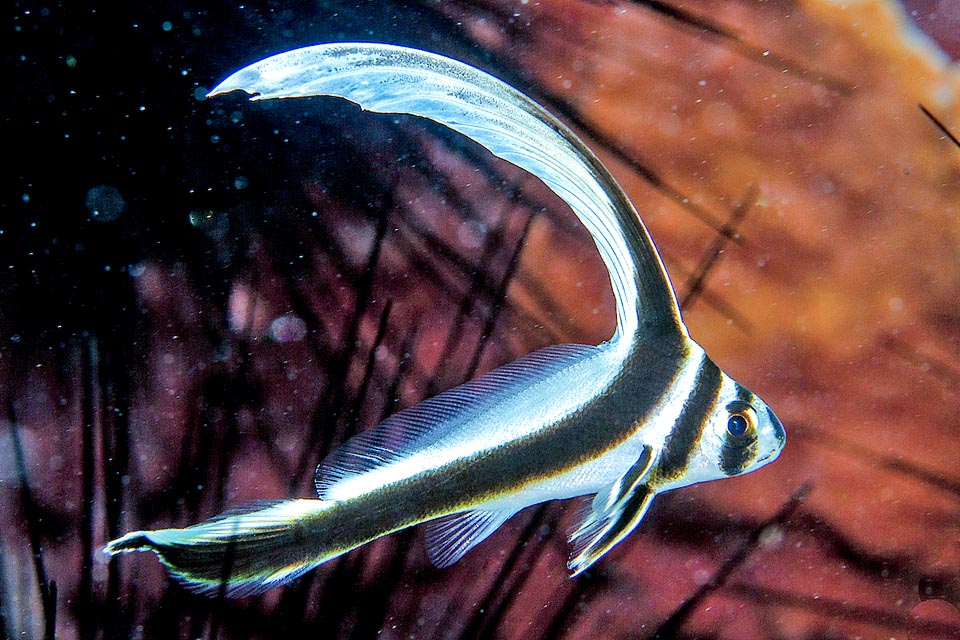
The juveniles often live sheltered by the spines of sea urchins or near the morays that chase away the predators © Allison & Carlos Estape
The livery, which has also earned the common name of Parish Priest or Lord Abbot, is substantially in white and black, presenting at most brown tones.
The head has two dark bands, one on the eye and the other inclined reaching the pelvic ones. Then there is an ample band extending from the fore part of the dorsal fin up to the caudal peduncle. Over two parallel stripes less wide and under two thinner. The second dorsal fin, the anal and the caudal in the adults have the characteristic white speckling.
In the juveniles the appearance is nastriform, both for the body which ends in a long caudal as well as for the first dorsal fin.
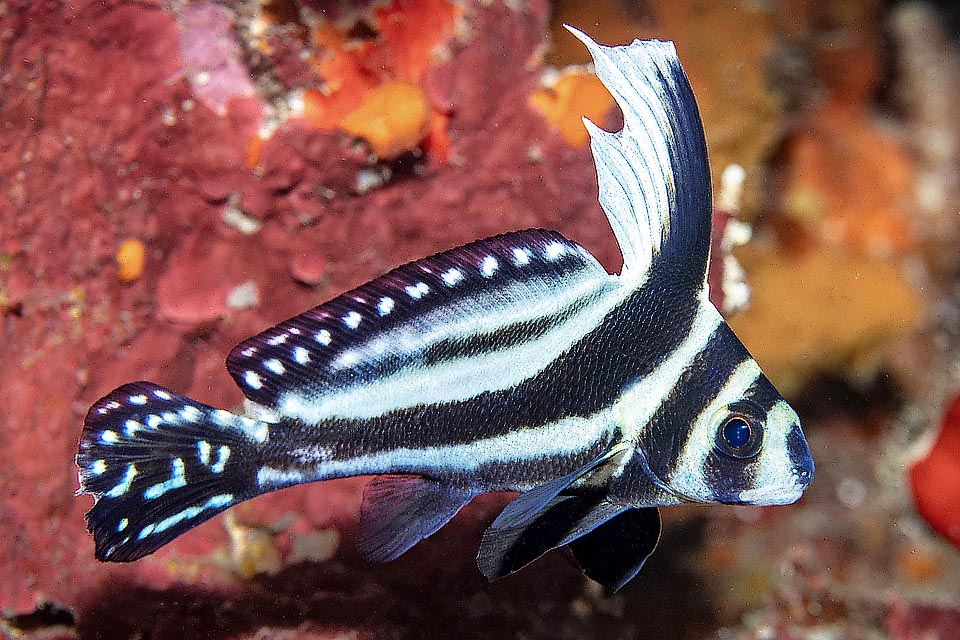
Then the plume reduces and appears gradually, close to other longitudinal bands, a luminous speckling on the dorsal fin and the caudal © Allison & Carlos Estape
In the early times there are only three black bands: on the eye, towards the pelvic and one long dark band going from the outer side of the first dorsal to the tail. A black dot between the eyes, on the snout, distinguishes them from Eques lanceolatus which instead show a thin vertical stripe.
Ethology-Reproductive Biology
Eques punctatus lives solitary and is active especially by night when it leaves the den looking for small crabs, shrimp and worms it sucks by opening its mouth suddenly. The eggs and the larvae are planktonic. The juveniles often grow sheltered among the long spines of the sea urchins or alongside the moray eels that keep away the possible predators.
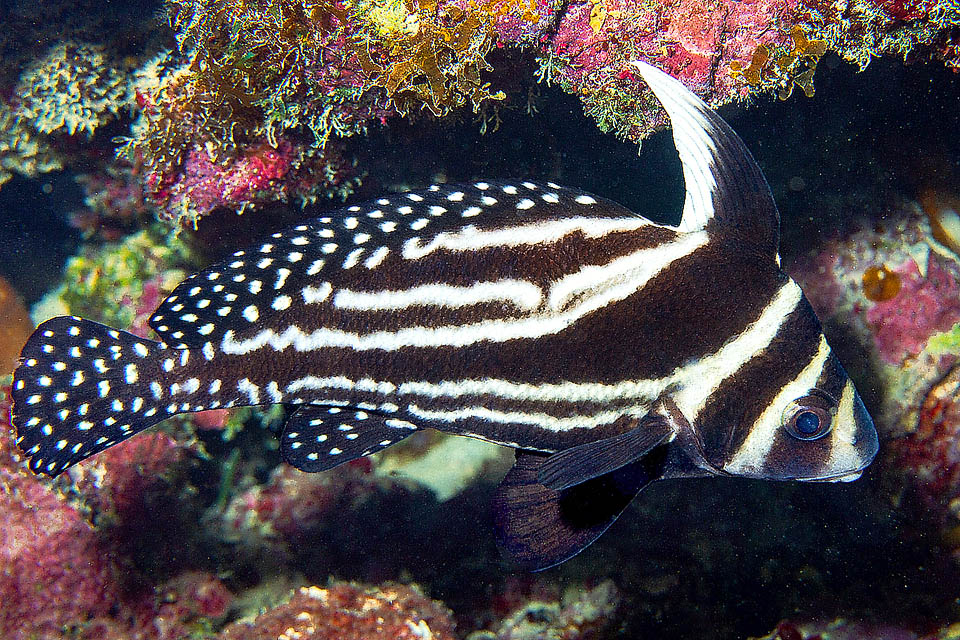
Also in the adult the anal is dotted, and the plume, reduced, appears pointed. Eques punctatus is not an endangered species © Allison & Carlos Estape
The flesh is good and is locally consumed, even if at times instances do occur of ciguatera, a serious food poisoning caused by their diet.
The resilience of the species is excellent, with a possible doubling of the population in less than 15 months, and the fishing vulnerability is low, marking only 17 on a scale of 100. Therefore, Eques punctatus is included in the Red List of endangered species as “Least Concern”.
Synonyms
Equetus punctatus (Bloch & Schneider, 1801).
→ For general information about FISH please click here.
→ For general information about BONY FISH please click here
→ For general information about CARTILAGINOUS FISH please click here.
→ To appreciate the BIODIVERSITY of BONY FISH please click here.
→ To appreciate the BIODIVERSITY of CARTILAGINOUS FISH please click here.
